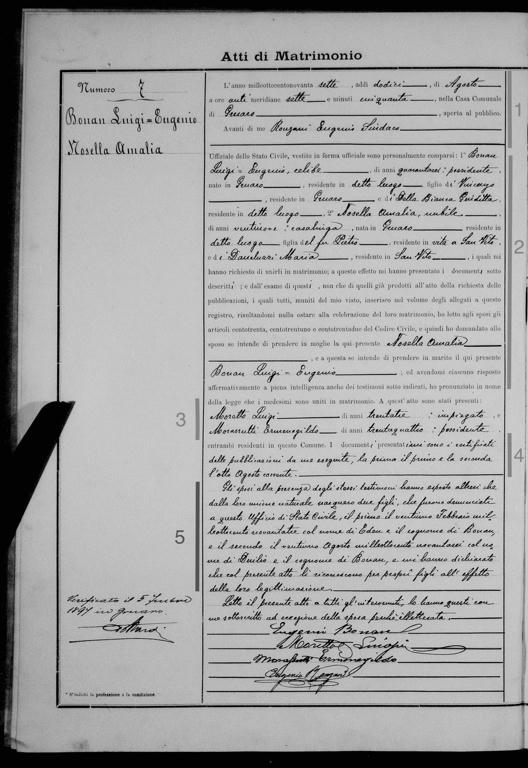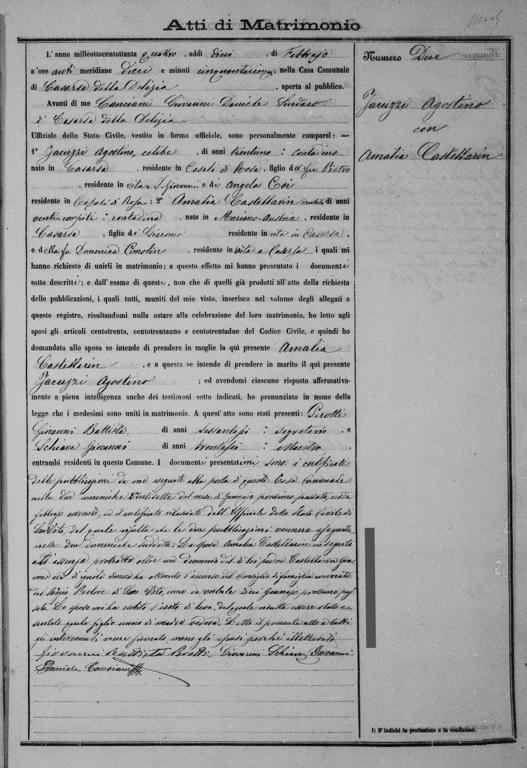These examples are from a period in which the writers just had to fill in the blanks on a form (in these pages a number of blank lines at the bottom of the form is what we want to focus on).
Gruaro (Venezia), Stato Civile, Matrimoni, anno 1897, number 7 (Family Search on-line)
This first example is a marriage act, it starts by listing the date and place [1], then the groom and bride data and marriage formula [2], witnesses [3] and list of documents provided (in this case, those attesting that banns had been completed) [4]. This is what's standard, a list of documents provided, banns and birth certificates, and it usually ends there.
The last section [5] is the one that interests us, and this is the translation of what it's written:
"The newlyweds in the presence of the said witnesses added that from their natural union were born 2 sons, that were reported to this Civil Office, the first on the 21st of February 1893 with the name of Eden and the surname Bonan, and the second on the 21st of August 1896 with the name of Duilio and the surname Bonan, and they declared that with this act they recognise them as their own legitimate children."
Casarsa della Delizia (Udine), Stato Civile, Matrimoni, anno 1884, numero 2 (Family Search on-line)
Another marriage act, same type of form.
This is what's written on the last highlighted section:
"The bride Amalia, in consequence of the fact that her father Giacomo has been absent for more than a decade and his whereabouts are unknown, has obtained permission [for the marriage, she was a minor, Ed.] from the Family Council summoned by the Royal Magistrate of San Vito, as written in the minutes dated January 10th of this year. The groom showed me conscription papers from which it appears he was exempted from service because he's the only son of a widow."
So in the first example we get dates of birth and names of 2 illegitimate (at the moment of birth, because the parents weren't married civilly) sons of the couple that we wouldn't have otherwise, because in this case Family Search doesn't list births from that town.
In the second example we read there's a difficult situation involving the father of the bride. He probably left for work and then disappeared, or died, or decided to have a new family, and no one knows where he is. She needs her parents' permission to get married, and that's why it's mentioned someone else (here the Council) has to take their place and decide.
We also glimpse the groom's situation and the fact that he's now the only (surviving) male able-bodied child of this widow.
It's a lot of extra information for just a few lines at the bottom of a document, and it can certainly make a huge difference!


No comments:
Post a Comment